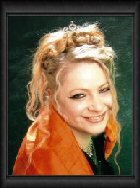“Forms of Ceremony — Where a marriage is solemnized by or in the presence of an authorized celebrant..., it is sufficient if each of the parties says to the other... the [required witnessed] words...”
— Section 45 of the Marriage Act 1961.
The basics of a legal marriage ceremony can be added to and embellished with whatever cultural, traditional or language elements you want.
Example 1: Sonia and Raoul want French cultural and linguistic elements in their wedding. They would like votive candles, Christian prayers in French, a greeting in French to the guests, French poetry readings and their vows spoken in French and in English. They would like French music from the 19ᵗʰ century and the duet from Lakmé sung by two sopranos (in French). The celebrant’s facility with French made all of that possible, and enabled a smooth integration of French and English, to please the bridal couple, the family and the guests.
Example 2: Maly and Sovann want to be respectful towards their Cambodian heritage. They will add a lengthy Cambodian wedding celebration to the civil ceremony, and were delighted to learn they could incorporate many traditional Cambodian/Khmer traditions into the ceremony itself. The celebrant will learn a greeting in Khmer, as well as reading out a Cambodian poem. Music will combine western and Cambodian elements with some traditional folksongs from Cambodia and some traditional wedding music from the Western wedding traditions. With a translator on hand to translate the vows from English into Cambodian, as well as the use of important Cambodian motifs and concepts included in the celebrant’s comments, it is truly a lovely blending of east and west.
Example 3: Tania and Phil are professors of language and classical studies, and they want a ceremony that will celebrate their interest in ancient cultures. They were very pleased to find that the celebrant they chose would read from classical Greek poetry (in the Greek and an English translation), would add a classical Latin blessing, and would even include poetry from ancient Sumer. Combined with beautiful ancient traditions such as a torch-bearing procession at dusk and the draping of sheepskins over two bridal chairs, and the ceremony itself conducted as the sun went down in an amphitheatre, the whole experience would combine both the old and the new.

I can utilise my familiarity with a number of languages, such as German, French, Italian, Spanish, Russian, classical Greek and more – and have had the pleasure of including other languages such as Chinese (Mandarin), Japanese, Farsi (Persian) in ceremonies so far. I am happy to become acquainted with other languages such as Vietnamese, Japanese, Chinese (Mandarin or Cantonese), indigenous aboriginal languages, Arabic, Farsi... To help makeyour ceremony as rich and beautifully designed as possible, I will tackle any language for greetings, readings, poetry, etc.
(A translator will still be necessary for ceremonies in which the participants are not fluent in English; this is not a substitute for an accredited translator to ensure that all legal wording and vows are understood.)
Cultures from all over the world, and even invented traditions from fantasy, can be beautifully incorporated into a ceremony that fulfils all the legal requirements of marriage in Australia, as well as reflecting your interests, your life and how you wish your ceremony to be designed.


